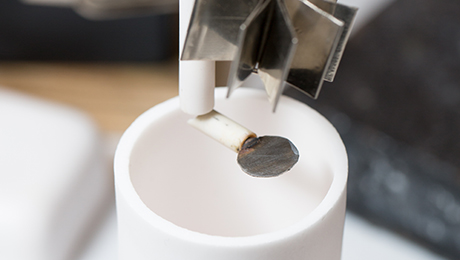While electric vehicles offer many advantages—including reducing greenhouse gas emissions and the country’s dependence on imported petroleum—at least one barrier stands in the way of their large-scale adoption: “range anxiety.”
The current 2014 electric Nissan Leaf, for example, has a range of just 84 miles on a fully charged battery.
|
The shape and size of the electrode, formed from folded nickel, can affect the performance of the battery. The electrodes are folded to increase the space where chemical reactions can occur. |
Researchers at the George Washington University, led by Professor Stuart Licht, think they have developed a novel solution—and they’re calling it the “molten air battery.”



